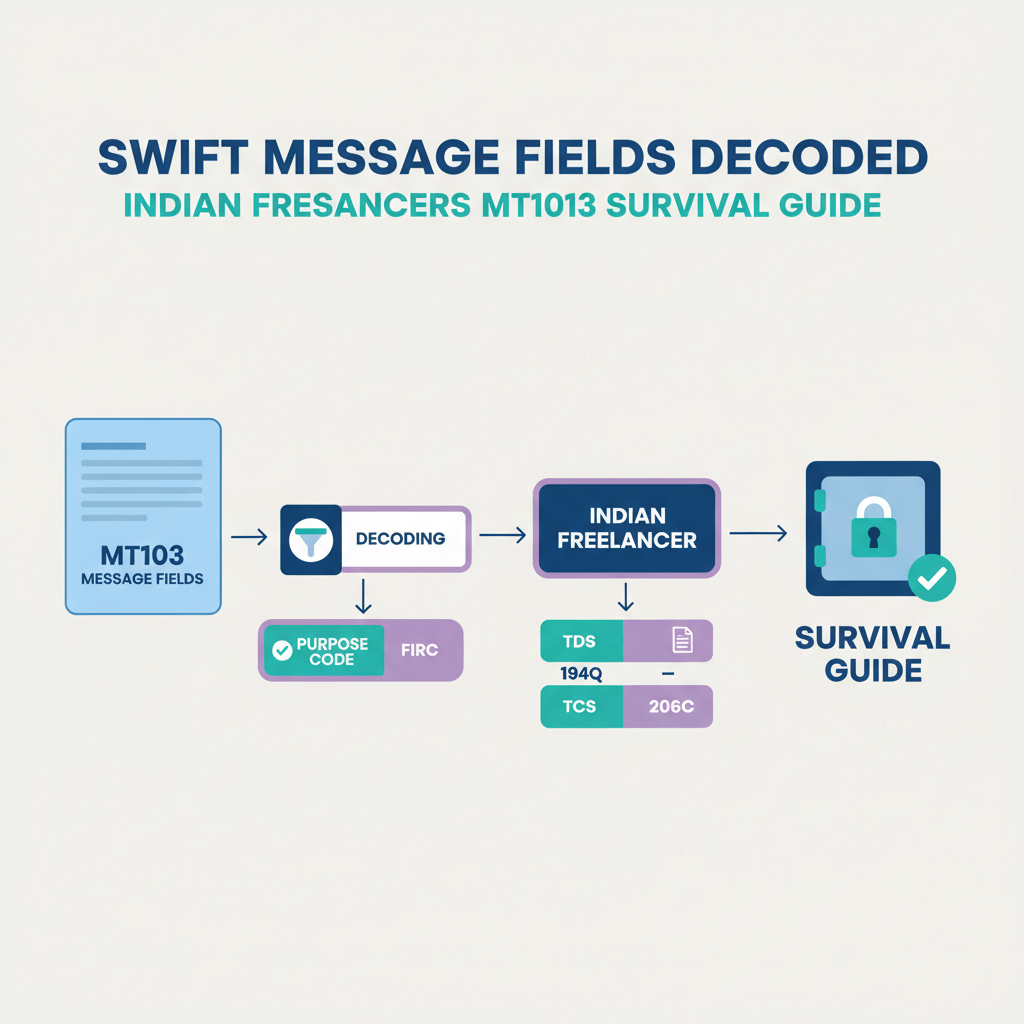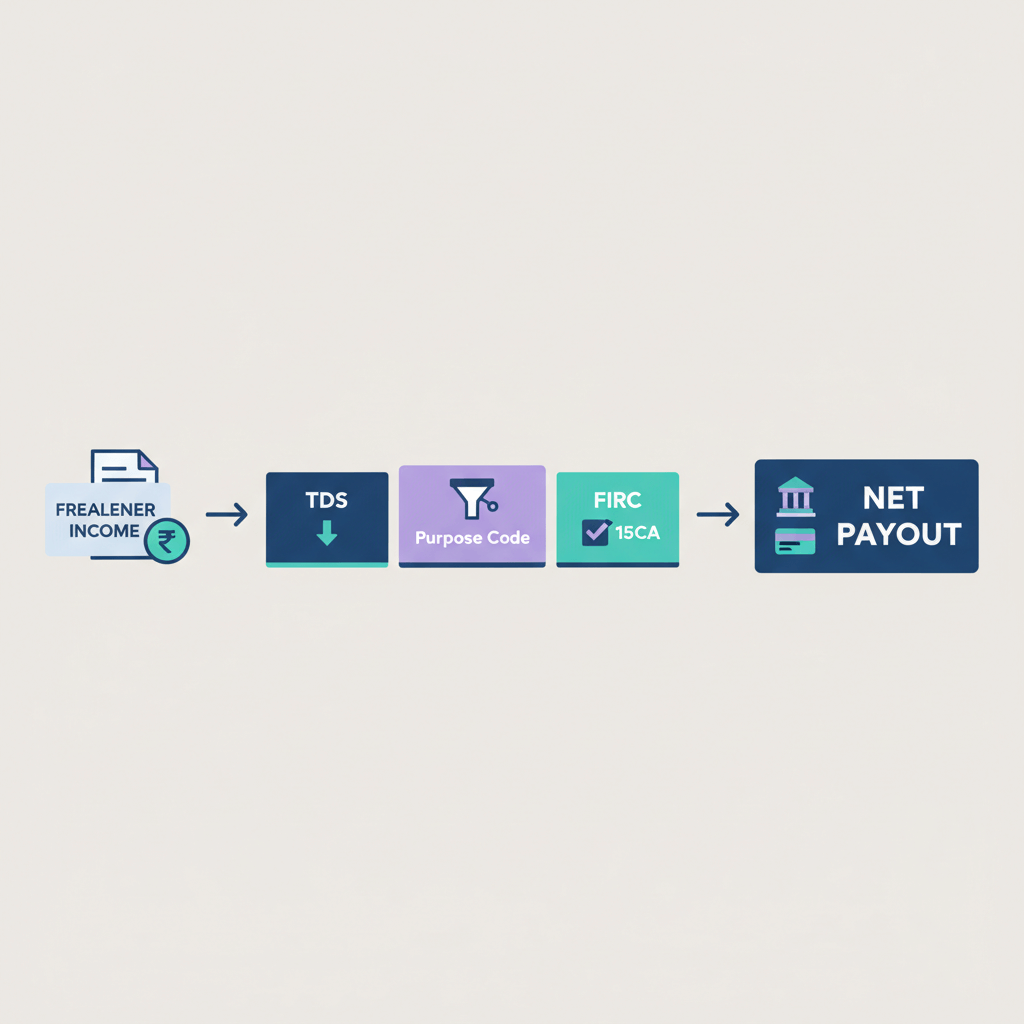International financial transactions carry inherent risks, such as delays, fraud, tax ambiguity, or non-compliance with foreign exchange laws.
To safeguard India’s economy and ensure transparent, regulated, and secure cross-border money transfers, the Reserve Bank of India (RBI) enforced the Foreign Exchange Management Act (FEMA) in 1999.
Anyone receiving payments from abroad, whether for business, freelance services, or family support, must go through a regulated process under FEMA to remain compliant.
This blog explains why FEMA exists, what it regulates, and who needs to follow its rules, especially in the context of receiving foreign payments.
What Is Inward Remittance?
When funds are transferred from abroad and deposited into an Indian business bank account, it is classified as an inward remittance. Different countries have their own regulations governing such international fund transfers.
In India, these regulations are overseen by the Reserve Bank of India (RBI) through the Foreign Exchange Management Act (FEMA).
What happens is the remitter initiates a payment from their foreign bank account to the Indian beneficiary’s account. The transaction is routed through a network of correspondent banks and processed using international payment systems like SWIFT. The funds are then converted into Indian Rupees (INR) by the receiving bank and credited to the recipient’s account.
Even if you use third-party platforms like PayPal, Payoneer, or Wise, the underlying structure is broadly the same. These platforms still rely on international banking systems and local bank partners to settle funds in India.
However, they process transactions faster by using pre-funded local accounts, batching settlements, and automating compliance checks. This gives the impression of near-instant transfers while still meeting FEMA guidelines.
To maintain this speed and convenience, these platforms charge a transaction fee, often ranging from 3% to 7%, which includes currency conversion and service costs.
What Are FEMA Regulations?
FEMA regulations refer to the rules established under the Foreign Exchange Management Act, of 1999, by the Reserve Bank of India (RBI). These regulations govern all aspects of foreign exchange in India, including inward remittances for business purposes. They outline the procedures, limits, and conditions under which businesses can receive funds from abroad into their Indian bank accounts.
Compliance with FEMA regulations is crucial for businesses to ensure legal and smooth transactions when receiving international payments. These regulations aim to manage and monitor foreign exchange transactions effectively, promoting economic stability and transparency in India's business environment.
Why There Are Foreign Inward Remittance RBI Guidelines Under FEMA Act?
When funds are transferred from abroad and deposited into an Indian business bank account, it is classified as an inward remittance. Different countries have their own regulations governing such international fund transfers. In India, these regulations are overseen by the Reserve Bank of India (RBI) through the Foreign Exchange Management Act (FEMA).
What happens is the remitter initiates a payment from their foreign bank account to the Indian beneficiary’s account. The transaction is routed through a network of correspondent banks and processed using international payment systems like SWIFT. The funds are then converted into Indian Rupees (INR) by the receiving bank and credited to the recipient’s account.
Why RBI Has FEMA Regulations?
The Foreign Exchange Management Act (FEMA) was introduced by the Reserve Bank of India in 1999 to manage India’s foreign exchange market in a structured, lawful, and stable manner.
Foreign Inward Remittance RBI Guideline Under FEMA Act:
Foreign Inward Remittance RBI Guidelines for Exporters (Step-by-Step)
Foreign Inward Remittance RBI Guidelines For Personal Use (step by step)
Prohibited Uses for Inward Personal Remittance
Even if the money is received as a gift, FEMA prohibits its use for certain activities, including:
• Buying real estate or investing in property on behalf of the sender
• Funding cryptocurrency trading
• Donating to political parties
• Any activity flagged as suspicious or unlawful
Always ensure the remitted funds are used for legal, personal, and declared purposes in line with FEMA regulations.
Which Businesses Are Not Allowed For Foreign Transaction under FEMA?
Any EXIM business Owner should understand that FEMA guidelines for Export clearly prohibit 7 types of current account transactions including.
What are the Financial Implications of Violating FEMA?
Violations can result in substantial penalties, sometimes three times the contravention amount. The Reserve Bank of India offers a resolution mechanism allowing for settlements without litigation, providing a pathway to mitigate penalties.
FEMA violations undergo a meticulous adjudication process, with entities having the option to appeal decisions to higher authorities, ensuring fair assessments.
What is proof of inward remittance?
For business inward remittances, proof of inward remittance refers to the documentation that confirms the transfer of funds from a foreign entity to a business entity in the recipient country, primarily for commercial purposes.
This documentation ensures compliance with regulatory requirements, facilitating financial reporting, and maintaining transparency in business operations.
Here are the essential forms of proof of inward remittance commonly used in business transactions:
1. Bank Statement: A bank statement showing the receipt of funds from an overseas source into the business's bank account serves as primary evidence of the inward remittance.
2. SWIFT Message: In cases of wire transfers processed through the SWIFT network, a confirmation message from the sending bank detailing the transaction specifics and beneficiary information is pivotal.
3. Foreign Inward Remittance Certificate (FIRC): Specifically in India, an FIRC issued by the recipient bank certifies the receipt of funds from abroad. It includes essential details such as the remittance amount, purpose, and sender's particulars. This document is essential for complying with foreign exchange regulations and leveraging tax treaty benefits.
4. Payment Advice or Receipt: Documentation issued by the sender or intermediary bank outlining the remittance details, including the purpose of payment and any relevant instructions.
5. Contract or Invoice: For transactions tied to specific business agreements, contracts, proforma invoices, purchase orders, or similar documents outlining the commercial terms and payment purpose can serve as supporting evidence.
6. Customs Declaration: In international trade scenarios, customs declarations or import/export documentation may also substantiate the purpose and value of the remittance.
What are the methods of inward remittance?
• Wire Transfer: This method involves electronically transferring funds from the sender's bank account to the recipient's bank account using systems like SWIFT (Society for Worldwide Interbank Financial Telecommunication).
• Online Payment Platforms: Services such as PayPal, TransferWise (now Wise), and other online platforms enable direct transfers of funds to the recipient's bank account or online wallet.
• Bank Drafts or Cheques: Physical bank drafts or cheques issued by the sender's bank can be used for remittance, with the recipient depositing these instruments into their bank account.
• Virtual Bank Account: Many fintech platforms offer virtual bank accounts that are mapped to the recipient's main account. These accounts allow foreign clients to remit money locally in their currency, which is then settled in INR to the Indian recipient.
• Payment Link: Businesses can generate and share secure payment links through their payment provider, enabling foreign clients to remit money using their preferred method (card, bank transfer, etc.), which is then settled directly into the recipient’s account.
FAQs:
1. What documents are required for receiving inward remittance in India?
You'll need your photo ID (like PAN, Aadhaar, or passport), bank account details, and the correct purpose code. For business remittances, KYC documents, invoice, and declaration may also be required.
2. Is inward remittance taxable in India?
It depends on the nature of the remittance. Personal gifts or support from family are generally not taxed, but income or business payments may be taxable under Indian law.
3. How do I know my correct purpose code?
Banks provide a list of RBI-approved purpose codes. Choose the one that best matches the reason for receiving funds, e.g., education, gifts, salary, or export income.
4. What happens if I mistakenly share the wrong purpose code?
The remittance could be delayed, flagged for review, or even reversed. Contact your bank immediately to request a correction.
5. What is the RBI limit for receiving inward remittances?
There is no upper limit for inward remittances, but large amounts may trigger compliance checks under FEMA or income tax laws.
6. What are the RBI and FEMA regulations on inward remittances?
Inward remittances must comply with FEMA and RBI guidelines, which regulate the source of funds, reporting requirements, and permissible purposes for receiving money from abroad.











